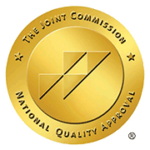What Is Transcranial Magnetic Stimulation? And Does It Work?

Transcranial Magnetic Stimulation (TMS) is a therapy often used for mental health conditions that don’t improve after other avenues of treatment – but does it work? And how?
Evidence shows that depression is the biggest cause of disability in the U.S. in people aged between 15 and 44 years of age. To put it another way, that’s approximately 21 million people who have experienced at least one bout of major depression – or roughly 8% of the adult population.1
If you are someone who has depression or another mental health condition, you may have tried some of the more commonly recommended treatment options out there. For instance, you might have tried talking therapy, medication, regular exercise, meditation, or other avenues. It can be tiring trying to find a solution that’s right for you – but what if you had an option that was relatively non-invasive? This is where Transcranial Magnetic Stimulation could come into play.
If you’re wondering whether TMS therapy for depression or another mental health condition is right for you or someone you care about, professional mental health advice is available. This article can also work as a useful guide, as it explains:
- What Transcranial Magnetic Stimulation (TMS) is
- How TMS works
- TMS therapy and its effectiveness for depression, anxiety, OCD, and PTSD
- The pros and cons of TMS
- Cost and Insurance Coverage

What Is Transcranial Magnetic Stimulation?
Transcranial magnetic stimulation (TMS) is a non-invasive therapy for mental health conditions that uses a magnetic field to stimulate the parts of the brain associated with mood regulation. It’s approved by the Food and Drug Association (FDA) to treat conditions such as depression, anxiety, obsessive-compulsive disorder (OCD), and post-traumatic stress disorder (PTSD).
Across many reliable sources of information, you may encounter TMS being called “non-invasive.” This is because it treats the chemistry of the brain without using any form of cutting or surgery – therefore discomfort is either non-existent or minimal. Additionally, when TMS is used to repeatedly deliver electromagnetic pulses to the brain to help with certain conditions, it’s called “repetitive TMS” or “rTMS.”2
How Does TMS Therapy Work?
As discussed, TMS therapy doesn’t involve surgery or penetrating the skin in any way. Instead, a trained mental health or medical professional will place an electromagnetic coil on the scalp.
After the coil is placed correctly, the TMS machine creates magnetic pulses that pass from the coil into targeted areas of your brain that are responsible for mood regulation. These regions in your brain may be underperforming if you’re a person with depression, anxiety, OCD, or PTSD.
By uniquely reactivating the areas responsible for mood management, the brain learns how to create new pathways and build connections between underperforming areas – providing relief from symptoms and mood issues. However, the intensity of these pulses is always carefully monitored to ensure complete safety and the best outcomes for treatment.
Additionally, the area of the brain that TMS is applied to may differ slightly depending on the mental health condition being treated. For instance, it may be used to reduce the amount of activity in the right-hand side of the brain in someone with anxiety. Yet, for someone with depression, it’s commonly used on the left-hand side to boost activity.
As is clear, TMS is an innovative treatment that improves emotional well-being and can be customized to someone’s specific symptoms. TMS is also a flexible treatment; it is typically delivered in an outpatient setting — meaning you will not have to stay overnight. However, it can be delivered as part of a residential treatment if required. You will also be awake and alert during your treatment, which only takes around 20-40 minutes per session. The number of sessions required will vary depending on your condition and response to treatment.
Additionally, after a session of TMS, you won’t need any recovery time, so you can carry on with your day as normal.
Is TMS Therapy Effective?
TMS therapy is considered to be an effective alternative solution to traditional therapies, especially for people who have been resistant to other treatments.
The effectiveness of TMS in the treatment of depression has been extensively studied, with one long-term study showing that it can improve the symptoms of depression by up to 50% in many cases.3 Further, another study demonstrated that modifying the length of TMS treatment, such as by providing repetitive TMS, can significantly benefit long-term recovery options for people with depression.4
Plus, TMS has not only been shown to be effective in treating depression. It also has some beneficial effects in the treatment of conditions such as post-traumatic stress disorder (PTSD) and obsessive-compulsive disorder (OCD).5
As a side note, TMS therapy doesn’t require talking about problems. This might suit some peoples’ needs, but not others – especially if someone wishes to process their issues through discussion. If you have any questions about the suitability of TMS for your or a loved one’s needs, a mental health professional will be happy to talk to you about your concerns.
TMS Therapy for Depression
Major depressive disorder typically causes symptoms such as consistent hopelessness, fatigue, and loss of interest in activities. Due to these symptoms, depression can seriously affect someone’s physical and mental health in a variety of ways, including impacting relationships, job performance, and outlooks for the future.
Many effective depression treatments are available, such as cognitive behavioral therapy (CBT), trauma-focused therapy, and dialectical behavioral therapy (DBT). However, up to 30% of patients with depression do not respond to such treatments. The reasons why this might be the case may come down to individual differences, such as co-occurring mental health conditions or how someone personally responds to talk therapy.6
In contrast, several studies have confirmed the benefits of TMS therapy for treatment-resistant depression. For example, one such study found that TMS repeated on a daily basis had significant antidepressant activity.7
Further, in another study, 70 patients with major depression were randomly assigned TMS or placebo treatment – further proving TMS’s benefits in depression treatment. In other words, the patients who received TMS therapy showed much improvement in depression symptoms in comparison to those who were given the placebo.8
If you’re concerned about the symptoms of depression in you or someone you know, seeking mental health guidance is advised. Depression is very treatable, but can worsen without support.
TMS Therapy for OCD
Obsessive-compulsive disorder (OCD) is a mental health condition that is characterized by intrusive and unwanted thoughts and behaviors – also known as “obsessions.” These obsessions can greatly interfere with someone’s quality of life, especially if they’re unresponsive to traditional therapies.
The good news is that research has shown promising evidence for using transcranial magnetic stimulation in the treatment of OCD. For example, one study showed that TMS can reduce compulsive urges in the eight hours following treatment.9
What’s more, TMS also improved obsessions, compulsions, and scores on the Yale-Brown Obsessive Compulsive Scale (Y-BOCS) after two weeks of treatment and a one-month follow-up.10
Based on this evidence, TMS may be suitable for you if you’re experiencing OCD symptoms that are impacting your well-being.
TMS Therapy for PTSD
Post-traumatic stress disorder (PTSD) is a condition that causes people to relive trauma through flashbacks, nightmares, and intrusive thoughts. PTSD can also cause people to avoid situations that could trigger these symptoms, meaning that it can impact their ability to manage relationships and employment.
Fortunately, for people who have been unresponsive to other forms of PTSD treatment, transcranial magnetic stimulation has been shown to be useful in lowering PTSD’s core symptoms. These include avoidance, anxiety, and physical signs of trauma. Patients in studies also showed a general clinical improvement as measured by the Clinical Global Impression Scale. Additionally, these findings have shown to be robust, even when compared to patients who received a placebo instead of TMS.11
Other therapies that may be useful for treating treatment-resistant PTSD include eye movement desensitization and reprocessing (EMDR), as it can change how trauma is stored in the brain.
TMS Therapy for Anxiety
While anxiety is a normal response to stress and overwhelm, anxiety disorders involve excessive fears about the past, present, and future. These fears can inhibit day-to-day enjoyment and affect job performance, relationships, and physical health. Additionally, according to the American Psychiatric Association, anxiety disorders affect up to 30% of adults at some point in their life.
While anxiety is commonly treated through talk therapies such as CBT and mindfulness approaches, some people may struggle to respond to treatment. For such people, transcranial magnetic stimulation may be able to provide a much-needed source of relief. One study, for instance, demonstrated that TMS showed promising results in treating patients with generalized anxiety disorder, improving their symptoms and strengthening brain connections. This effect may also be particularly meaningful for people with comorbid anxiety and depression, as the results showed that TMS therapy was effective for patients with symptoms of both.12
What Are the Pros and Cons of TMS?
Still not sure if transcranial magnetic stimulation is right for you? Understanding the key benefits and drawbacks of TMS treatment can help.
Benefits of Transcranial Magnetic Stimulation
The following are the potential benefits of TMS for treating a wide range of mental health conditions:
- TMS is non-invasive. This means that no surgery or medications are required.
- The therapy is FDA-approved for a range of conditions, including depression, anxiety, OCD, and PTSD
- There’s no need for anesthesia. Patients can undergo treatment without needing any downtime or recovery time
- TMS can be adapted to a busy routine. Sessions only last around 20-40 minutes, so it can fit conveniently into your daily routine
- It has minimal side effects, especially when compared to medication. Plus, a mental health professional can explain these side effects and whether they would impact you
- TMS is not a talk therapy. Therefore, people who are uncomfortable discussing their mental health don’t have to
Drawbacks of Transcranial Magnetic Stimulation
The following are the potential drawbacks of TMS therapy:
- While TMS sessions are only 20-40 minutes long, it typically requires multiple sessions – often daily for around 4-6 weeks depending on the person. If this is the case for you, you may need to adjust your schedule to commit to your course of TMS therapy
- There’s a small risk of TMS therapy side effects. Even though TMS is considered safe, in some cases, therapy can result in scalp discomfort, lightheadedness, or headaches. In rare cases, seizures can occur especially in people with a history of epilepsy or other neurological conditions
- TMS may not be a permanent cure. Although this form of therapy can alleviate mental health symptoms, some people can be resistant to treatment – especially if they have complex mental health issues. In short, TMS does not work for everyone and its effectiveness can vary
- People with metal implants in or near the head may not be eligible for TMS due to safety concerns, for example, certain dental fittings, pacemakers, or cochlear implants
While there are some potential drawbacks to TMS, a mental health professional can talk you through any cons and put your concerns at ease. Safety and well-being are always at the top of their considerations.
What Is the Cost of TMS Therapy?
The cost of TMS therapy may vary from state to state in the U.S., as well as depending on someone’s unique needs. For instance, TMS therapy can cost between $300 to $500 dollars per session in the US. Typically, courses of treatment are between 20 to 30 sessions, which would bring the total cost of therapy to a minimum of roughly $6000-$12000 – or potentially more.
However, there are options for insurance coverage for TMS therapy. Most insurance companies cover TMS, however, it’s good to know that coverage usually applies to people for whom other treatments have failed. Therefore, if you or a loved one are considering TMS therapy, it may be important to check whether you will be covered by your provider.
Additionally, mental health professionals are very familiar with the insurance process, so they’ll be able to talk you through the steps toward coverage if TMS is something you’re considering.
Transcranial Magnetic Stimulation at Mission Connection
If you think transcranial magnetic stimulation is the right treatment option for your or a loved one’s needs, Mission Connection’s dedicated team can help. Our team of licensed professionals is both supportive and compassionate, making sure you’re feeling comfortable and listened to during your experience.
Mission Connection understands there may be some anxiety and stress relating to the treatment process, but we are trained to provide guidance and emotional support during your course of therapy. You will be assessed for suitability during an initial consultation and, thereafter, be monitored throughout treatment to track progress. You’ll also receive comprehensive aftercare, and, if needed, maintenance sessions to continue your progress and success.
Reach Out Today for Mental Health Support
Mission Connection prides itself in providing a holistic care program that encompasses all aspects of your well-being. If you’re thinking about booking into one of Mission Connection’s TMS treatment centers then be assured that you will be getting a comprehensive level of care that puts you first. Non-invasive, schedule-friendly treatment awaits.
Aside from TMS therapy, Mission Connection’s multidisciplinary team can provide a range of other services including daily group therapy with licensed therapists, weekly psychiatric care with medication management, and weekly individual therapy. We can also incorporate a variety of therapeutic approaches into your personalized treatment program, such as cognitive behavioral therapy (CBT), dialectical behavioral therapy (DBT), mindfulness, psychoeducational groups, and solution-focused therapy.
Explore Mission Connections Telehealth Program:
Mission Connection proudly offers an innovative hybrid model that combines in-person and telehealth services, making it easy for you to access the care you need, no matter where you are. This way, you’re empowered to connect with your clinical team at your convenience, ensuring flexible access to care – when and how it works best for you.
Ready to prioritize your mental well-being? Mission Connection is here to help. Contact us today at 866-619-7530 for more information on how to start your journey towards healing and recovery. We’re here to support you every step of the way.

References
- National Institute of Mental Health. (n.d.). Major depression. National Institute of Mental Health. https://www.nimh.nih.gov/health/statistics/major-depression
- Oxford Health NHS Foundation Trust. (2020, March). RTMS patient leaflet (long version). Oxford Health NHS Foundation Trust. https://www.oxfordhealth.nhs.uk/wp-content/uploads/2020/03/OH-253.20-rtms-patient-leaflet-long-version.pdf
- UCLA Health. (2023, February 13). Study finds possible early predictor of successful transcranial magnetic stimulation (TMS) treatment for depression. UCLA Health. https://www.uclahealth.org/news/release/study-finds-possible-early-predictor-successful-transcranial
- Miller, T. (2023). Early predictors of transcranial magnetic stimulation treatment success. Molecular Psychiatry, 28(5), 1644–1651. https://doi.org/10.1038/s41386-023-01599-z
- McGrath, M. (2023, May 15). Achieving OCD relief: Consideration of TMS earlier in the treatment continuum. Psychiatric Times. https://www.psychiatrictimes.com/view/achieving-ocd-relief-consideration-of-tms-earlier-in-the-treatment-continuum
- Avery, D. H., & Holtzheimer, P. E. (2010). Transcranial magnetic stimulation in the treatment of depression. Psychiatric Clinics of North America, 33(3), 547–562. https://doi.org/10.1016/j.psc.2010.04.004
- American Psychiatric Association. (1997). Diagnostic and statistical manual of mental disorders (4th ed.). American Psychiatric Association. https://psychiatryonline.org/doi/10.1176/ajp.154.12.1752
- Fava, G. A., & Tomba, E. (2021). A clinical perspective on the early diagnosis of treatment-resistant depression. JAMA Psychiatry, 78(9), 983-991. https://jamanetwork.com/journals/jamapsychiatry/fullarticle/204901
- American Psychiatric Association. (1997). Diagnosis and treatment of major depression: Updates and current guidelines. American Journal of Psychiatry, 154(6), 867-877. https://psychiatryonline.org/doi/10.1176/ajp.154.6.867
- The Psychiatrist. (2023). Right versus left prefrontal transcranial magnetic stimulation for depression. The Psychiatrist, 47(3), 67-70. https://www.psychiatrist.com/jcp/right-versus-left-prefrontal-transcranial-magnetic/
- George, M. S., & Risch, S. C. (1998). Transcranial magnetic stimulation: A tool for clinical neuropsychopharmacology. Biological Psychiatry, 43(5), 287-298. https://doi.org/10.1016/S0006-3223(98)00016-X
- Pérez, L., & Lacerda, G. A. (2023). Transcranial magnetic stimulation and its role in treating depression: A review. Journal of Affective Disorders, 316, 1-10. https://www.sciencedirect.com/science/article/abs/pii/S0165032723000782





